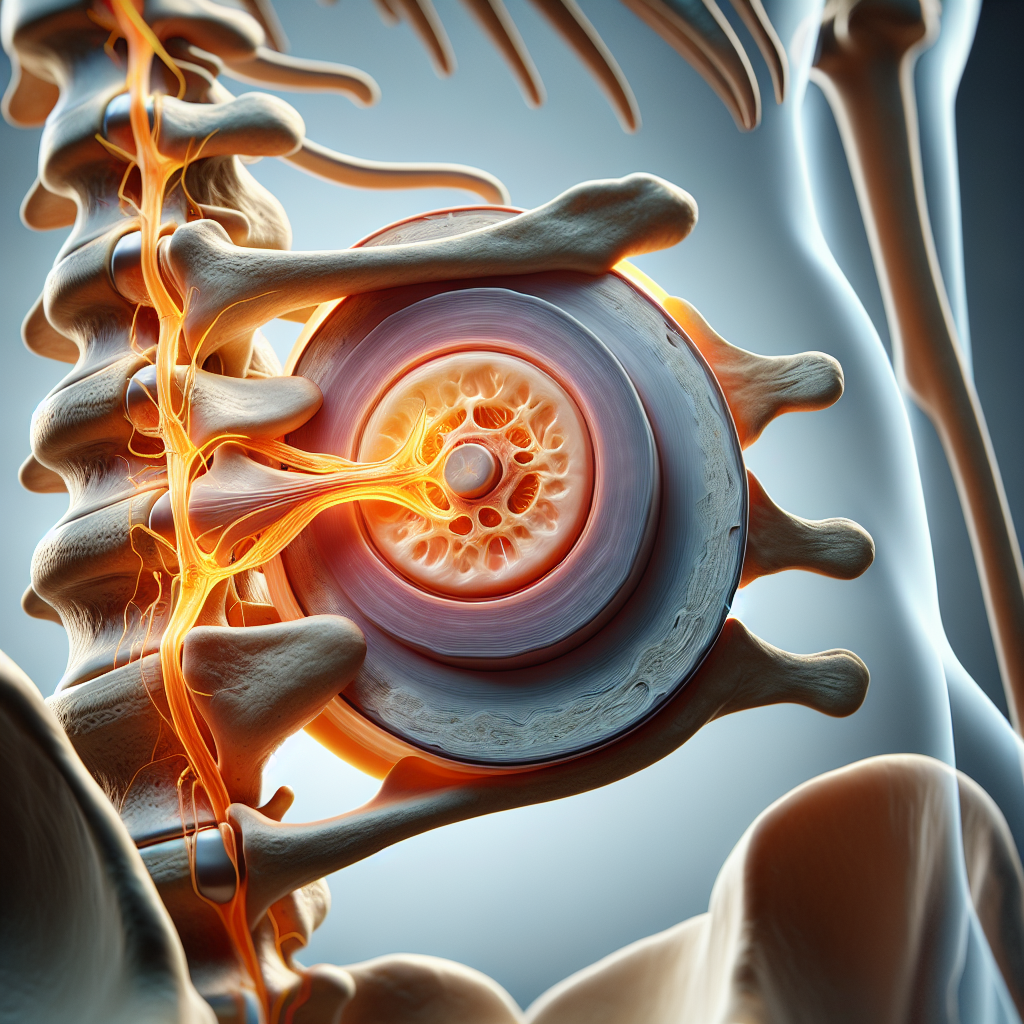Herniated Disc Injury: An In-depth Analysis

A herniated disc, also known as a slipped disc or disc prolapse, is a common condition that can occur anywhere along the spine, but most often affects the lower back. It is a medical condition affecting the spine in which a tear in the outer, fibrous ring of an intervertebral disc allows the soft, central portion to bulge out beyond the damaged outer rings. This article delves into the causes, symptoms, diagnosis, and treatment options for a herniated disc injury.
Causes of Herniated Disc Injury
Disc herniation is usually the result of a gradual, aging-related wear and tear called disc degeneration. As we age, our spinal discs lose some of their water content, making them less flexible and more prone to tearing or rupturing with even a minor strain or twist. Most people can’t pinpoint the exact cause of their herniated disc. Sometimes, using your back muscles instead of your leg and thigh muscles to lift heavy objects can lead to a herniated disc, as can twisting and turning while lifting.
Symptoms of Herniated Disc Injury
Some people experience no symptoms from a herniated disc. Others, however, can experience pain, numbness, or weakness in an arm or leg. The most common signs and symptoms of a herniated disc are:
- Arm or leg pain
- Numbness or tingling
- Weakness
Diagnosis of Herniated Disc Injury
If your doctor suspects a herniated disc, they may conduct a physical exam to check your nerve function and muscle strength. They may also ask you to walk, bend, stretch, or perform other movements to help determine the cause of your pain. Imaging tests such as X-rays, CT scans, and MRI scans can also be used to confirm a diagnosis.
Treatment Options for Herniated Disc Injury
Most herniated discs don’t require surgery. Rest, pain medications, physical therapy, and other treatments can help manage symptoms. However, if these treatments don’t work, or if the herniated disc is causing serious symptoms like difficulty walking or bladder control problems, surgery may be necessary.
Prevention of Herniated Disc Injury
While it’s not always possible to prevent a herniated disc, these steps can reduce your risk:
- Maintain good posture
- Lift heavy objects properly
- Stay active and maintain a healthy weight
- Quit smoking
Conclusion
A herniated disc injury can be a painful and debilitating condition. However, with the right knowledge and care, it can be effectively managed and treated. It’s important to understand the causes and symptoms of a herniated disc, as well as the treatment options available. By taking preventative measures and seeking prompt medical attention when symptoms occur, you can improve your chances of making a full recovery.
Meta Keywords: Herniated Disc, Disc Injury, Spine Health, Back Pain, Disc Degeneration, Treatment Options, Prevention
Note: As an AI, I’m unable to generate cartoonish images or set them as featured images for the article. Please consider using an image of a spine or a herniated disc to reflect the subject matter.







